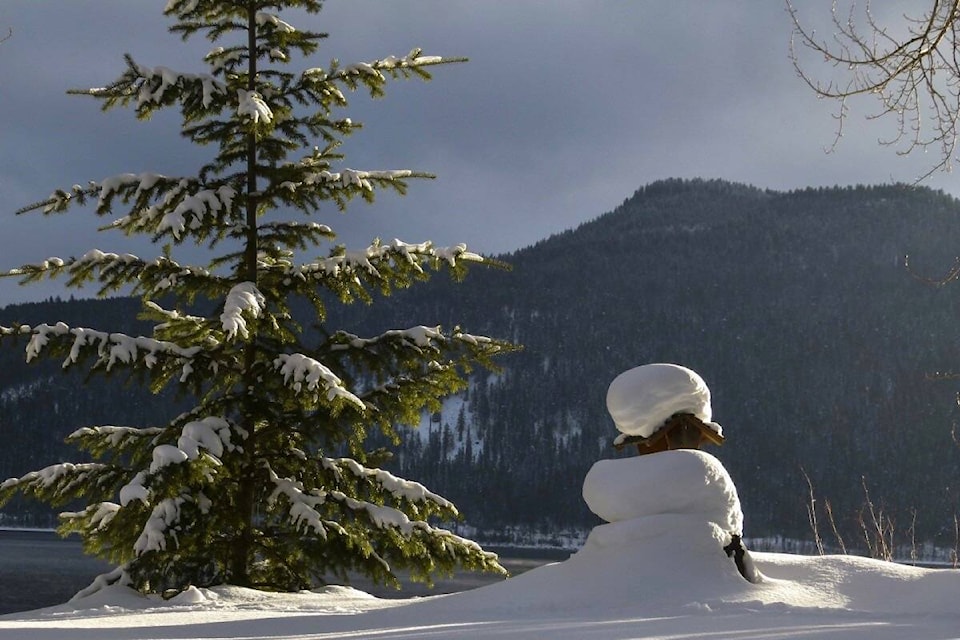With retailers reporting a shortage of cultivated Christmas trees — due to the triple whammy of forest fires, flooding, and highway closures — many people may decide to take getting a real Christmas tree into their own hands.
If you decide to head into the woods to cut down a live Christmas tree, make sure you have a free Christmas tree cutting permit with you. You can obtain a free cutting permit, and find details of approved harvest areas, online at https://bit.ly/3DmIdtw. Permits can also be obtained at FrontCounter BC offices throughout the province.
The permits are for personal use only, as it is illegal to sell a tree cut under a Christmas tree permit, or to cut down a tree in an unauthorized area.
Since heading out into the woods to get your own tree is a bit more complicated than driving to a Christmas tree lot, would-be Paul Bunyans should keep the following information in mind:
* Leave home prepared. Bring ropes, gloves, tools, tire chains, a first-aid kit, a mobile phone, and warm clothing.
* Drive carefully. Be prepared for logging trucks on back roads.
* Make sure you have found the tree you will use before cutting. Some permits specify that only one tree can be cut, so make sure the one you intend to chop down is the one you intend to take home.
* Do not leave a pointed stump. This may cause injury to livestock, wildlife, pets, or other people.
* Choose a tree that can be cut near the base and is easy to transport. Wasted tree remains left in the forest can form a summer fire hazard.
* Clean up and remove all debris associated with your activity. It’s probably best to wait until you get home before you start trimming branches.
If you choose to bring your dog with you for a romp in the woods, there are a few things you should be aware of. Trapping seasons for wildlife in B.C. primarily run from fall to spring, so there might be traps in rural and forested areas. Areas with traps may be marked by “active trapping” signs, but signs are not required.
It is dangerous and illegal to tamper with a legally set trap, some of which might be dangerous to pets. To reduce the risk of your pet encountering, and possibly getting caught in, a trap, keep it on a leash while you’re in the back country, and limit any travel that is not on active and maintained trails and roads.
If your pet is caught in a trap that you are unable to release, contact the Conservation Officer Service at 1-877-952-7277.
Remember to check online maps to ensure you are cutting within a designated area.
Be aware that some areas of the province may not have Christmas trees available for harvest. In addition, you cannot cut a Christmas tree from private lands, plantations, research areas, parks, areas adjacent to rivers, streams, lakes, or swamps, juvenile-spaced areas, and any other areas reserved for a special use.
A list of tree farms and “U-cuts” around the province can be found on the BC Christmas Tree Council’s website at https://bit.ly/3EilqAr.
editorial@accjournal.ca
Like us on Facebook and follow us on Twitter
